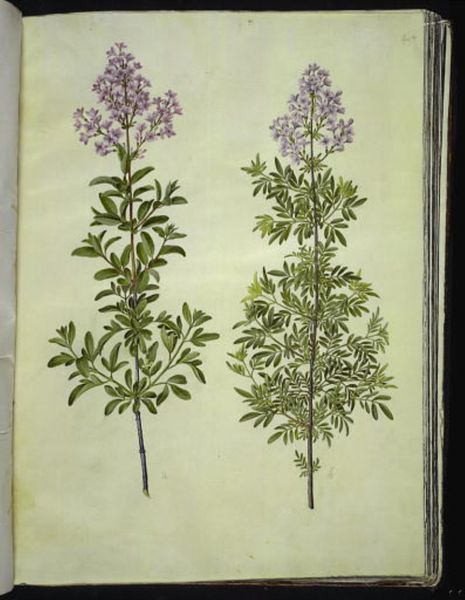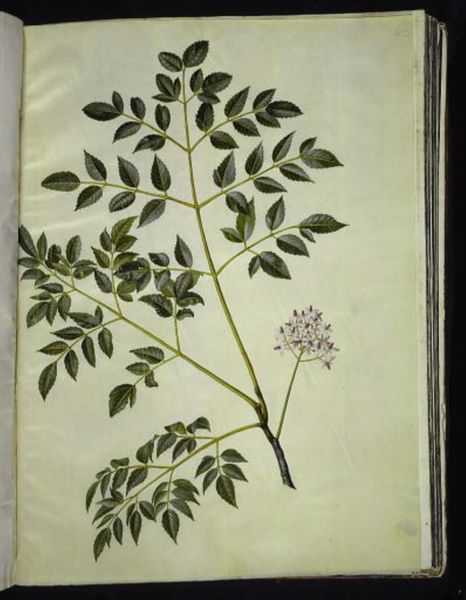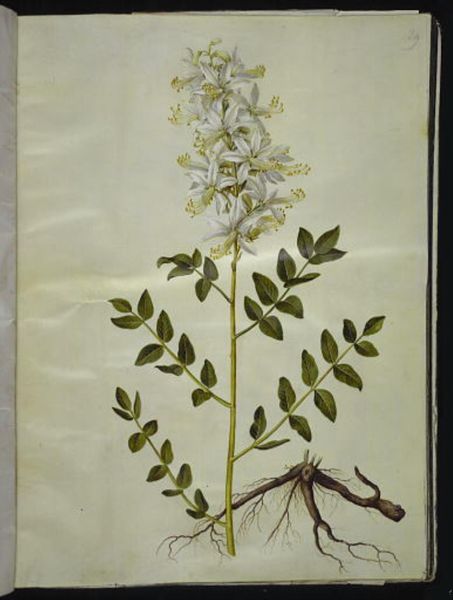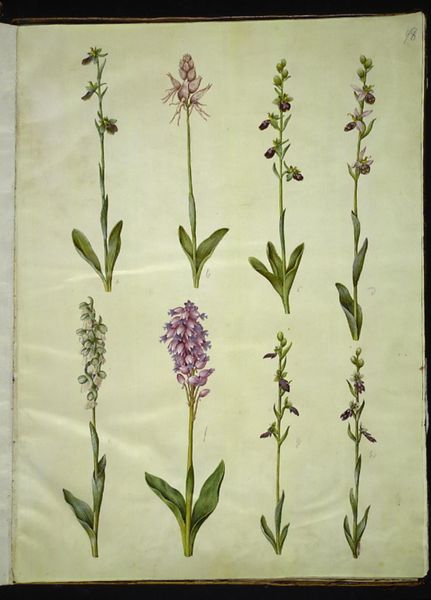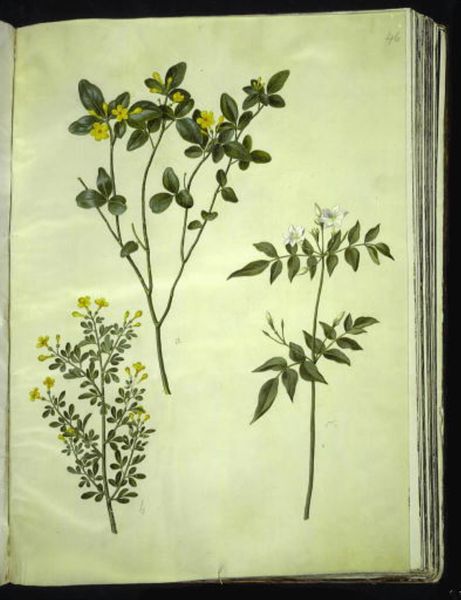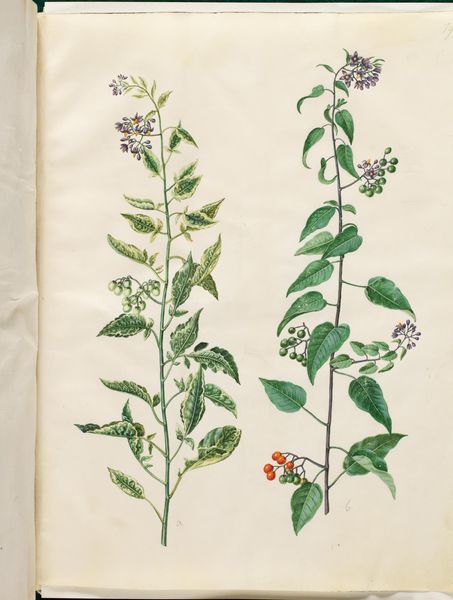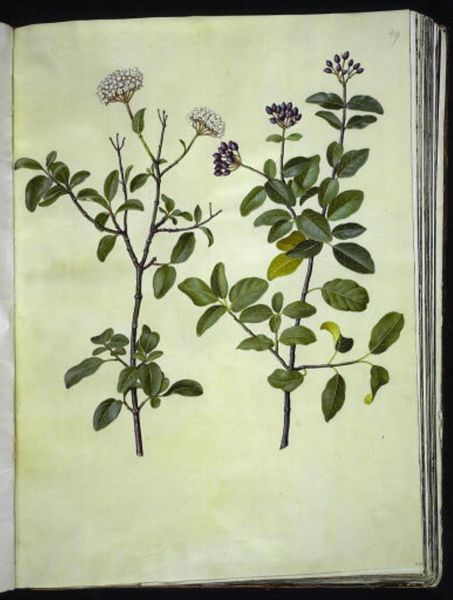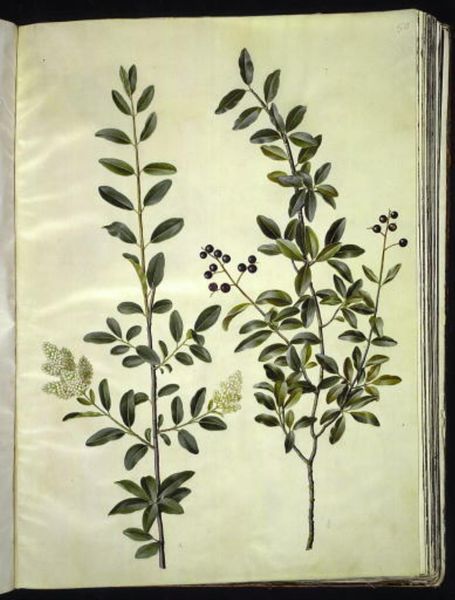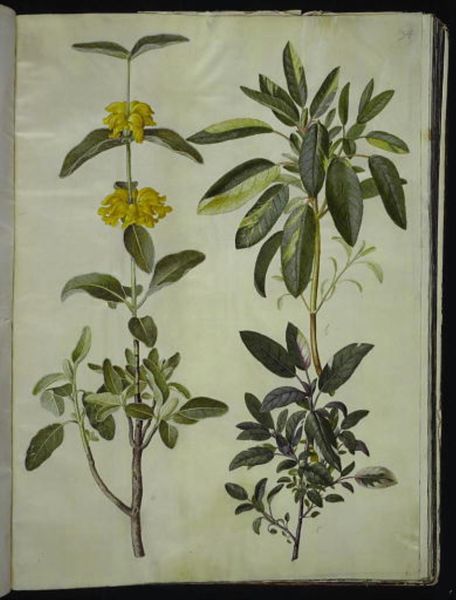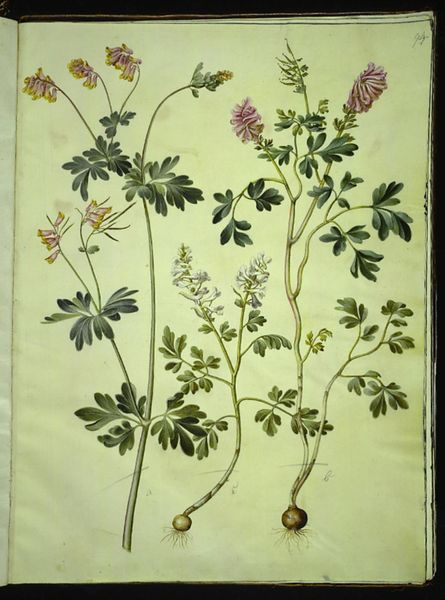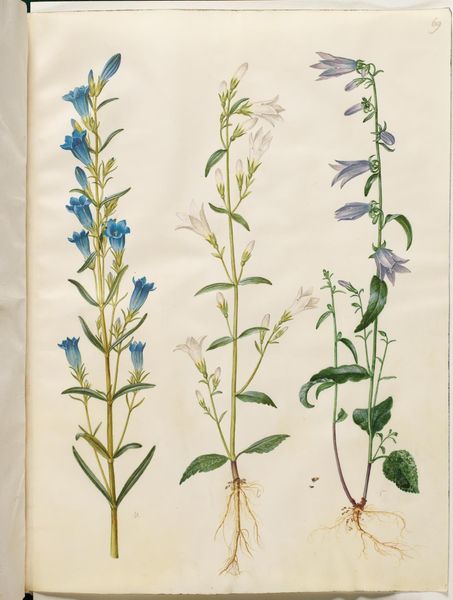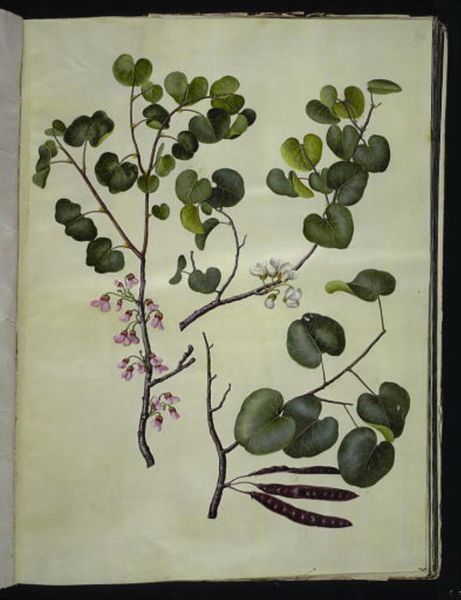
Syringa ×persica (persisk syren); Philadelphus coronarius (vellugtende pibeved); Syringa vulgaris (almindelig syren) 1649 - 1659
0:00
0:00
drawing, coloured-pencil, gouache, watercolor
#
drawing
#
coloured-pencil
#
gouache
#
watercolor
#
coloured pencil
#
watercolour illustration
#
botanical art
#
watercolor
Dimensions: 505 mm (height) x 385 mm (width) (bladmaal)
Hans Simon Holtzbecker made this botanical study of lilac and mock-orange plants, in watercolour, during the 17th century. The image exemplifies the period's increasing interest in scientific observation, documentation and classification of the natural world. Holtzbecker’s fastidious realism speaks to a culture keen on cataloguing and understanding its environment, in a moment of burgeoning colonial expansion. Created in Denmark, the drawing reflects the influence of Dutch botanical art which was highly prized across Europe. These botanical studies were not just scientific records but also luxury items, collected by the wealthy to display their knowledge and sophistication. The scientific aesthetic reflected a broader social shift towards rationalism and empiricism, subtly endorsing a worldview that prized order and control. As historians, we can use sources like estate inventories, scientific treatises, and travelogues to understand how images like these were consumed and what they meant to their original audiences. Ultimately, this artwork reminds us that even seemingly objective representations are shaped by their social and institutional contexts.
Comments
No comments
Be the first to comment and join the conversation on the ultimate creative platform.
